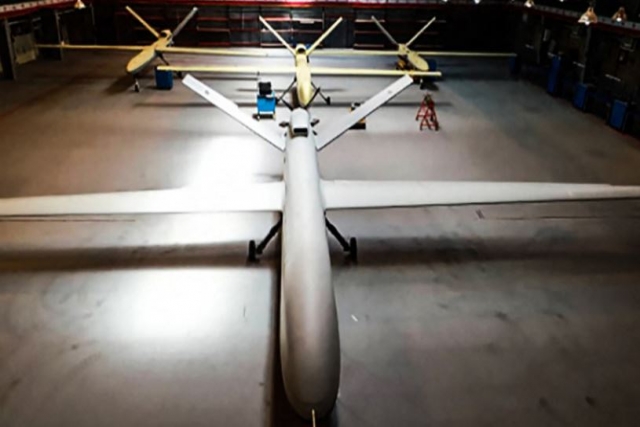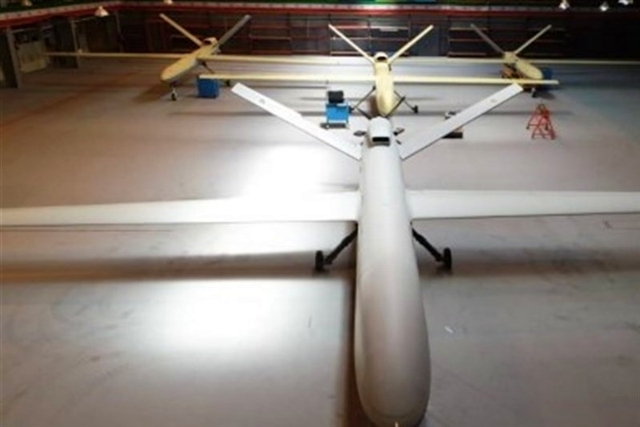U.S. Targets Iran's Drone Program with New Sanctions

The United States has targeted Iranian projects aiming to develop armed drones by slapping sanctions against several companies and their executives linked to them.
The Islamic Revolutionary Guard Corps (IRGC) Qods Force (IRGC-QF) allegedly used and proliferated lethal UAVs for use by Iran-supported groups, including Hizballah, HAMAS, Kata’ib Hizballah, and the Houthis, and to Ethiopia, where the escalating crisis threatens to destabilize the broader region. Lethal UAVs have been used in attacks on international shipping and on U.S. forces, the U.S. Treasury Department said in a statement Friday.
In June 2021, Chief Commander of IRGC Major General Hossein Salami claimed that the country has drones that have a range of 7,000km. Four months later, Salami said that the IRGC Navy made considerable progress in development and manufacture of unmanned aerial vehicles (UAVs), and now possesses hundreds of reconnaissance, surveillance, combat and Kamikaze drones with different operational ranges of up to 1,200km.
“Iran’s proliferation of UAVs across the region threatens international peace and stability. Iran and its proxy militants have used UAVs to attack U.S. forces, our partners, and international shipping,” said Deputy Secretary of the Treasury Wally Adeyemo. “Treasury will continue to hold Iran accountable for its irresponsible and violent acts.”
Iran’s Foreign Ministry spokesman Saeed Khatibzadeh condemned the U.S. Treasury’s action, calling it “a continuation of the Trump administration’s failed policy of maximum pressure." “A government that talks of returning to the nuclear deal but follows in the footsteps of former U.S. president Donald Trump sends the message that it is not trustworthy," he said in a statement.
The U.S. Department of the Treasury’s designated Saeed Aghajani, the commander of IRGC Aerospace Force (IRGC ASF) UAV Command. Under his leadership, the command reportedly orchestrated the July 29, 2021 attack on the commercial shipping vessel Mercer Street off the coast of Oman, which resulted in the deaths of two crewmen. Aghajani also was behind a UAV attack against a Saudi Arabian oil refinery in 2019.
Iranian forces have been responsible for several high-profile attacks against international shipping over the last few years, including two prior incidents this year alone. In 2019, Iranian strikes targeting six tankers were widely condemned, including an operation orchestrated by the IRGC in May 2019 that resulted in damage to Saudi, Emirati, and Norwegian vessels, the U.S. said.

According to the department, Kimia Part Sivan Company (KIPAS) officials conducted UAV flight tests for the IRGC-QF and provided technical assistance to IRGC-QF UAVs transferred to Iraq for use in IRGC-QF operations. KIPAS is said to have procured valuable UAV components for onward use by the IRGC. Mohammad Ebrahim Zargar Tehrani allegedly helped KIPAS source these components from companies based outside of Iran.
IRGC Brigadier General Abdollah Mehrabi, as chief of the IRGC ASF Research and Self-Sufficiency Jihad Organization (SSJO), is accused of procuring UAV engines for the organization from Oje Parvaz Mado Nafar Company (Mado Company), an entity he co-owns and for which he has served as chairman. Mado Company and its managing director Yousef Aboutalebi procured UAV engines for the IRGC Navy and entities supporting weapons development for the Iranian military, including Iran’s Qods Aviation Industries (QAI) and Aircraft Manufacturing Industries (HESA), which is a U.S.-sanctioned company that has provided UAVs to the IRGC.
The U.S. says QAI funded IRGC-related projects and contracts with Iran’s Ministry of Defense and Armed Forces Logistics (MODAFL) for aviation and air defense research. The European Union listed QAI as an entity linked to Iran’s proliferation-sensitive nuclear activities or development of nuclear weapon delivery systems in March 2012. HESA conducts research on, development of, production of, and flight operations for UAVs in Iran, and the IRGC utilizes UAVs manufactured by HESA.
“As a result of today’s designations, all property and interests in property subject to U.S. jurisdiction of the persons designated are blocked, and U.S. persons are generally prohibited from engaging in transactions with the designated persons or their blocked property,” the Treasury department said. “In addition, foreign financial institutions that knowingly facilitate significant transactions for, or persons that provide material or certain other support to, the persons designated today risk exposure to sanctions that could sever their access to the U.S. financial system or block their property or interests in property under U.S. jurisdiction.”











